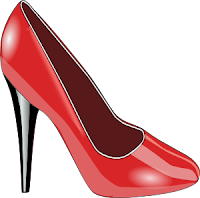Panela
 What is that brown tea-like drink that Colombians drink? Agua de Panela!
What is that brown tea-like drink that Colombians drink? Agua de Panela!What exactly is Panela?
Panela is a solid piece of raw sugar from sugar cane. It is made by first mashing the sugar cane in a machine called a trapiche. Then, the exacted juice is boiled until it reaches the Hard Ball stage. At this stage, it is poured into molds and allowed to cool. The cooled blocks (either round, square, or rectangular depending on the mold) are very hard. These blocks are then sold.
Here is a great video that shows the process of making PANELA.
http://www.youtube.com/watch?v=UvqbTZ0unEc
Though other countries make similar products, Colombia is the world's leading producer and consumer of Panela -- producing approximately 1.4 million tons a year. Panela farms also provide employment for about 350,000 people.
How do you use Panela to make the drink Agua de Panela?
The recipe for Agua de Panela is simple. You take water and put it in a pan and add to it chunks of Panela -- usually broken off with a rock from a river bed. You bring the mixture to a boil and allow the panela chunks to completely dissolve.
If you like your Agua de Panela very sweet, you add more chunks. Less sweet? Add more water.
You can drink it hot, or let it cool down. In my husband's family, they are more likely to drink it hot.
What are the beliefs surrounding Agua de Panela?
Agua de Panela is believed to have healing powers. When you have a cold, Agua de Panela with a squirt of lime juice in it is your first line of defense.
It is also believed, by many Colombians, to be similar to Gatorade in its composition. This lead Colombian cyclists in the 1980's to "cook rocks" during the Tour de France.
What role does Agua de Panela play in the Colombian diet?
Agua de Panela is very cheap and therefore is consumed by the majority of Colombians, no matter what their socioeconomic status. Unfortunately, in the lower socioeconomic families, it is a major source of calories for children. While it is filling, it lacks important nutrients and often children develop symptoms of malnutrition because of a lack of protein in their diet. ICBF tries to alleviate this problem by providing (with the help of the World Food Program) a protein based powder -- BIENESTARINA -- to be mixed with the panela water.
Most of the children that are adopted through ICBF will be very familiar with Bienestarina. When we adopted our son, it was clear that he missed his TETERO made with Bienestarina. At one point, my husband's sister-in-law made our son a TETE with some of what she had. Our son gobbled it up like he was starving. However, because Bienestarina is not available for purchase, you will not be able to get it while in Colombia.
In some families, a good substitute for Bienestarina is mixing Agua de Panela with milk. This might be an option if you are struggling with what to feed your child. Give it a try!
Would you like to buy some panela?
Try Amigo Foods:
http://www.amigofoods.com/doapaulapanela.html
*Photo by Wikicommons:
http://en.wikipedia.org/wiki/File:Panela.JPG

Comments